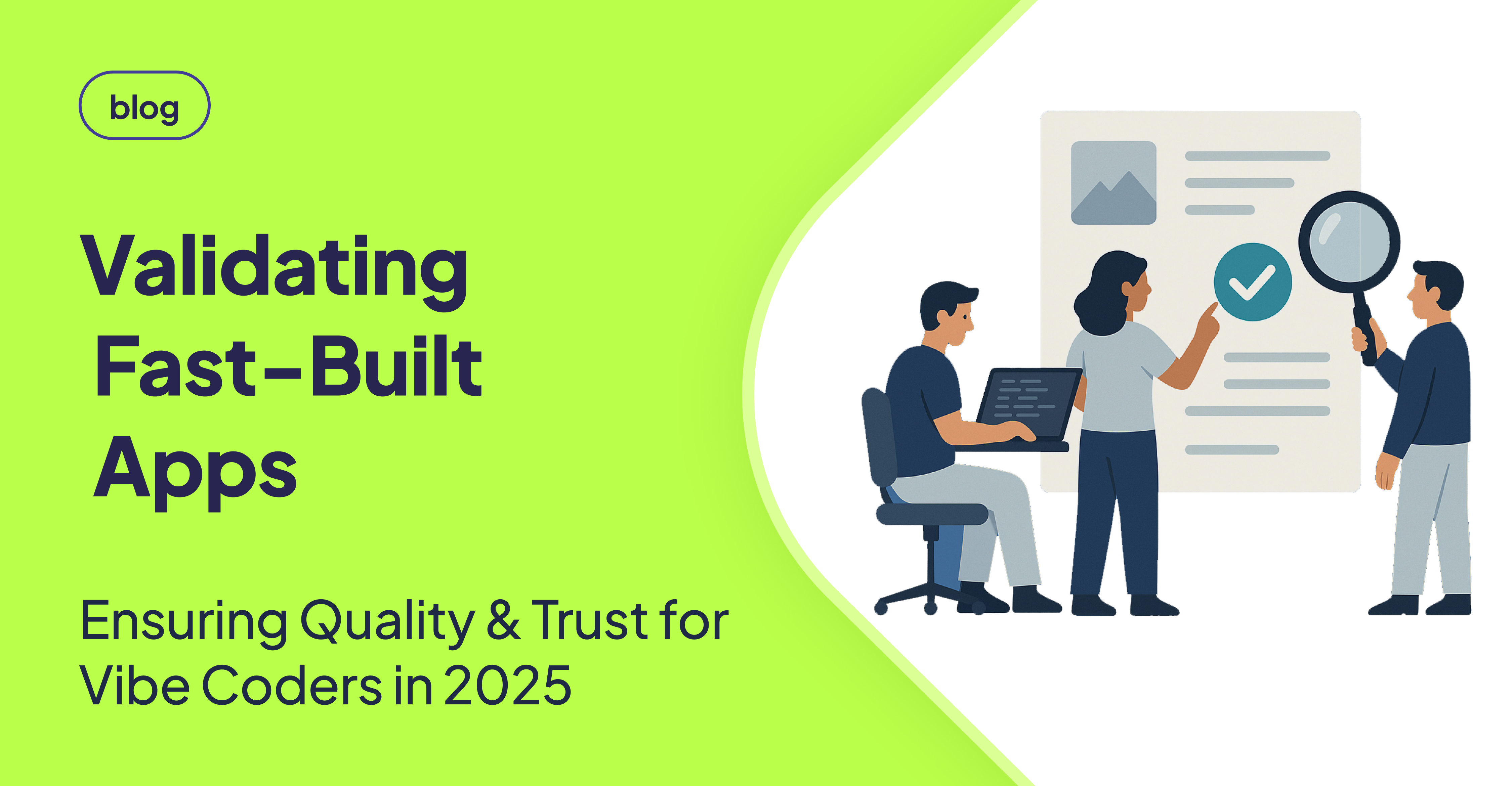TLDR
"Vibe coding," the practice of rapid application development, is accelerating software creation but introduces risks of quality and security issues. A newly developed QA chatbot tool aims to mitigate these risks by offering automated UI validation that integrates seamlessly into rapid deployment cycles. This ensures that applications maintain high standards of quality and security without hindering development speed or replacing the essential insights of human testers.
Introduction
"Vibe coding" is rapidly becoming a core approach in modern tech development. Instead of prolonged planning and architectural perfection, vibe coders prioritize immediate building, rapid iteration, and launching Minimum Viable Products (MVPs) quickly. This approach emphasizes learning through user interaction and real-world application.
Moving Fast Comes with Risks
While the speed of vibe coding offers significant advantages, it also introduces risks if proper safety measures aren't in place. Neglecting quality assurance can compromise user trust, lead to regulatory compliance issues, and ultimately damage a brand’s reputation. [STAT: Industry reports indicate that over 70% of software defects are introduced during the design and coding phases.] Recent data suggests that 62% of rapidly developed, AI-assisted applications encounter critical issues within their first week of launch, highlighting the potential for significant problems that impact both user experience and data security.
Introducing the QA Co-Pilot
To combat these risks, a new QA tool has emerged as a "co-pilot," designed to operate unobtrusively during experimentation while standing ready to identify issues before they reach production. [STAT: Companies that prioritize QA automation can reduce time-to-market by up to 30%.] The primary aim of this tool is to provide vibe coders with a crucial safety net, enabling them to maintain development speed without sacrificing application quality.
Security by Design
Security is fundamentally embedded in the design of this QA chatbot, ensuring data protection and integrity from the outset:
- Local-First Validation: By default, the tool performs validation locally, ensuring that sensitive data remains within a secure environment.
- Full Audit Logs: Comprehensive audit logs provide a clear compliance trail for every test run, aiding in regulatory adherence and accountability. [STAT: Maintaining comprehensive audit logs can reduce compliance costs by 20%.]
Conclusion
This new QA chatbot offers a fresh perspective on automated UI validation tailored for the fast-paced world of vibe coding. Currently in beta, it provides a glimpse into the future of rapid application development, demonstrating how to maintain high standards of quality and security without hindering speed. It serves as an essential safety net, enabling developers to innovate quickly and confidently.
FAQ
Will this slow down my deploy cycles?
Not at all. The QA chatbot is designed to integrate seamlessly with your existing tools and processes. It validates workflows automatically, allowing you to maintain your development speed without the delays associated with manual sign-offs.
Can it replace manual testers entirely?
No, and that's not the intention. The tool is designed to dramatically reduce repetitive checks and flag critical issues early, which frees up human QA testers to focus on more complex edge cases and the overall user experience. [STAT: Automation can handle up to 80% of repetitive testing tasks.]
Is it only for large engineering teams?
No. The QA chatbot offers flexible options to suit various scales and needs, whether you’re an independent developer or part of a large organization.
What does it test that unit tests don’t?
Unit tests primarily validate isolated logic within the code. This chatbot, on the other hand, dives into real user journeys, interacts with the UI, verifies visual elements, and catches problems that only manifest in end-to-end flows, providing a more comprehensive view of application performance. [STAT: End-to-end testing can identify up to 50% more defects than unit testing alone.]
